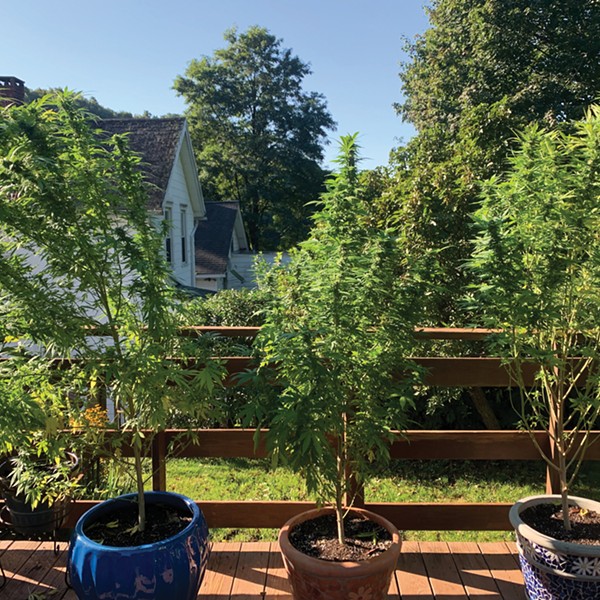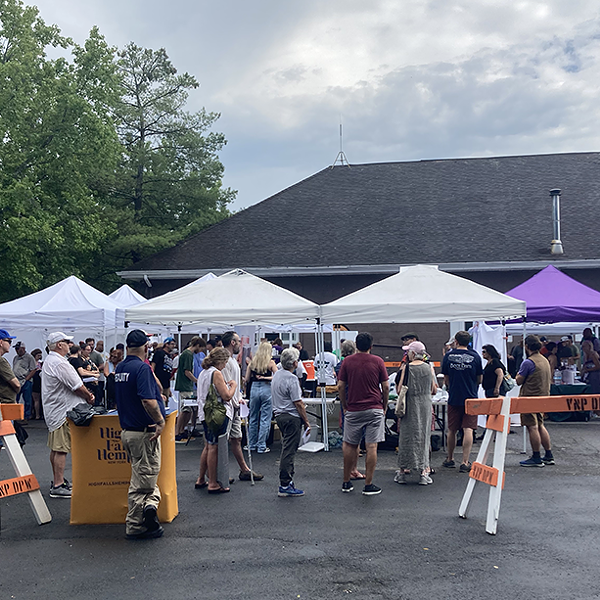When New Yorkers finally get the chance to buy legal weed (by the end of 2022 if all goes well), they might not be able to find a licensed dispensary nearby. Towns, villages, and cities have until December 31 to decide if pot shops and cannabis cafes belong in their communities, in accordance with the Marijuana Regulation and Taxation Act (MRTA).
Some local officials have been vocal opponents of adult-use marijuana, despite its legalization, while others think it’s high time to embrace cannabis commerce. Others are still on the fence: Only two members of the Philipstown Town Board voted in favor of opting out at a July 14 board meeting, the rest of the board waiting for more research and public input before making a final decision. Some towns, like Cornwall-on-Hudson, are scheduled to vote on the issue at board meetings this month.
More than 100 jurisdictions are passing on adult-use sales so far, according to Mike Doyle, founder of cannabis consulting company Cannasigliere. Doyle has created and is maintaining a municipal opt-out tracking map for New York State and says his research shows there are twice as many towns opting out than opting in.
A Wait-and-See Approach
Some local leaders are skeptical of the projected windfall from legal cannabis businesses and see it as a drop in the bucket that pales in comparison to the potentially detrimental effects of weed. Others are taking a wait-and-see approach to the financial justification of legal weed, wanting to see exactly how much money starts flowing into neighboring towns.Dina Rollman, senior vice-president of government and regulatory affairs for Green Thumb Industries, the Chicago-based cannabis firm that recently broke ground on Warwick’s $50 million cannabis campus, cites a persistent public information gap as a challenge. “More education is needed so that communities can shift their thinking and realize the positive impact a dispensary can bring,” Rollman says. “Some municipalities simply want to wait until other communities work out the kinks, and then they’ll opt-in.”
The catch? By the time they change their stance, it might be too late to cash in. The Cannabis Control Board is in charge of licensing and will likely limit the number of licenses available in the state. Many will be snatched up before ambivalent politicians change their minds. It’s not the politicians who will be hurt by this, but rather, their constituents. A crucial part of the MRTA is social equity licensing. How will those who suffered the most consequences of the War on Drugs reap the benefits of legal cannabis if they live in a municipality that bans dispensaries?
NIMBY logic
A cluster of towns and villages on Long Island are staunchly opposed to canna-business. Babylon Town Supervisor Richard Schaffer held meetings earlier this year with all 13 Long Island town governments to discuss forming a united front against cannabis in their communities. “Legalization is here,” said Schaffer. “There is nothing we can do about that. But there is something we can do about making it less readily available,” he told News 12. Schaffer hasn’t yet convinced the entire island to align with his views, but many of his constituents agree.Others may not be against legal weed if it’s not being sold in their town. Some residents are concerned that pot shops will drive down real estate prices, though industry professionals like data scientist and research product manager at Clever Real Estate, Dr. Francesca Ortegren say this is unlikely to occur.
Ortegren found dispensaries to have a positive impact on home values across the country, using publicly available data from Zillow and the US Census to write a detailed blog post on the issue for Clever’s website. As Ortegren notes, average home value in cities with licensed recreational dispensaries is $22,090 more, on average, than in cities where recreational marijuana is legal, but dispensaries are not.
And yet, the Putnam County health department took a different approach, citing facts from an earlier study published in the Regional Science and Urban Economics Journal this past March, sending constituents a letter summarizing the presumed downside to legal pot shops: “Home prices within a 0.36-mile area of a new dispensary fall by three to four percent on average relative to control areas.”
The truth is, like the rest of New York’s legal marijuana landscape, hazy. Both studies are accurate, but Putman County’s letter ignores the long-term effects of dispensaries on home values, while Dr. Ortegren’s study sourced data from a five-year period. Real estate values may temporarily dip when dispensaries open, but are projected to rise steadily once sales begin.
Mike Doyle, who created the opt-out map, says his current focus as a cannabis consultant is to educate constituents so they can make informed decisions on legal weed, whether they’re for or against the provisions in the MRTA.“It’s been ingrained in our psyche for so long that cannabis is illegal, it’s become a moral issue,” said Doyle. “Opponents say it affects the youth, it causes crime, and we shouldn’t exchange tax revenue for moral principles.” Doyle hopes more New Yorkers will open their minds to allow the industry to flourish once they learn that racist politics and bad science are at the root of prohibition. “If you're going to make a decision that affects all of your citizens,” cautions Doyle, “just look at the science first.”
The NIMBY logic of the opt-out movement stems from decades of propaganda, but it’s not too late to reach out to voters in the municipalities that are still on the fence, says Doyle. He encourages concerned citizens to embolden themselves with the latest findings on legal cannabis and canna-commerce.
“If you’ve never been to a legal dispensary,” says Doyle, “you might have misconceptions of what it would look like to have one in your town.” The myth that they will drive crime to municipalities is just that: a myth. Licensed dispensaries must adhere to strict security regulations which can include have 24-hour surveillance cameras, biometric locks, and on-site security (which prevents loitering, as well as theft). “At this point,” says Doyle, “Dispensaries can be more secure than a bank.”
Locals Get Involved in the Future of Canna-Business
Amsterdam Town Supervisor Thomas DiMezza was quick to introduce a resolution opting out of retail sales of marijuana as soon as New York legalized weed, but has since changed his mind. DiMezza, a former police officer, was encouraged by the Office of Cannabis Management’s regulatory progress and sent voters a survey in August, which showed most Amsterdam residents in favor of allowing dispensaries. “That’s what we’re here for, to listen to the people,” DiMezza told the Recorder. “If people want something we’ll try to get it done.”In June, Middletown’s Common Council held a board meeting to discuss the potential ban on retail sales and cannabis cafes. One Middletown resident, IT director Juan Ayala, responded strongly to Mayor Joseph DeStefano’s arguments against legal weed sales. “You are going to have to trust the people here,” said Ayala. “We’re in the 21st century.”
Though Middletown ultimately banned pot shops, the discourse inspired Ayala, to run for alderman in the upcoming election on November 2 and push for a referendum next year. “It wasn’t on my radar when I first started this campaign,” said Ayala, “but I’m going to keep fighting for this now. I’m a sore loser.”
















